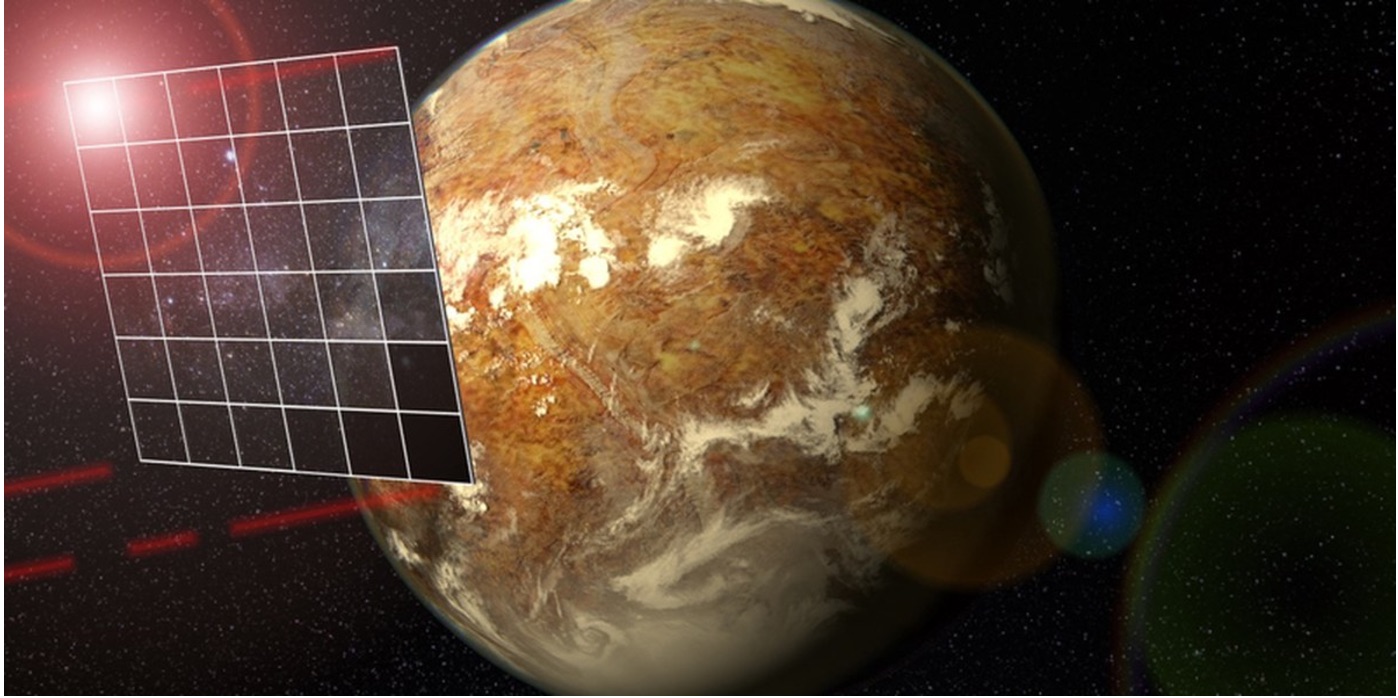Super-Fast Spacecraft Could Slow Down Using Alpha Centauri's Starlight as Brakes

Last year, a consortium led by billionaire Yuri Milner and physicist Stephen Hawking announced a plan to get to Alpha Centauri, the nearest star system to Earth. Called the Breakthrough Starshot Initiative, the plan is to send ultra-light "nanoprobes" to the system in 20 years by accelerating them to 20 percent of the speed of light using powerful lasers.
A group of German researchers — while fully supportive of the initiative — worried that without an important tweak, however, the science might suffer. One of these nanoprobes would be able to dash the Earth-moon distance in just six seconds at that speed. With this in mind, the researchers devised some ideas about how to slow the nanoprobes down so they can carry out some observations when they arrive at their destination (rather than zipping through the system at high speed), potentially spotting Proxima Centauri b, a possible habitable planet that orbits Alpha Centauri's oddball red dwarf sibling, Proxima Centauri.
"The solution is for the probe's sail to be redeployed upon arrival so that the spacecraft would be optimally decelerated by the incoming radiation from the stars in the Alpha Centauri system," said scientists from the Max Planck Institute for Solar System Research in Gottingen, led by Rene Heller, in a statement.
"During the approach to Alpha Centauri, the braking force would increase," they added. "The stronger the braking force, the more effectively the spacecraft's speed can be reduced upon arrival. Vice versa, the same physics could be used to accelerate the sail at departure from the solar system, using the sun as a photon cannon."
RELATED: Is Hawking's Interstellar 'Starshot' Possible?
The plan is for the spacecraft to go to the star Alpha Centauri A at a distance of about four million kilometers, moving at about 4.6 percent the speed of light. Any higher and the probe would go right past the star, rather than being caught in the star's gravitational field.
If the probe goes in at just the right speed and just the right place, the spacecraft would be attracted by the star's gravitational field and could be swung around the star, similar to how spacecraft in our solar system sometimes move between planets. One option here would be to keep the spacecraft in the Alpha Centauri A system to look at its planets, but the scientists would prefer to also include Alpha Centauri B and Proxima Centauri, the other two stars in the system.
Get the Space.com Newsletter
Breaking space news, the latest updates on rocket launches, skywatching events and more!
"The sail could be configured so that the stellar pressure from star A brakes and deflects the probe toward Alpha Centauri B, where it would arrive after just a few days. The sail would then be slowed again and catapulted towards Proxima Centauri, where it would arrive after another 46 years — about 140 years after its launch from Earth."
RELATED: Hawking Backs Project to Launch Probe to Nearby Star
The astronomers said they will discuss their ideas with the Breakthrough Starshot Initiative to see if this mission extension could be included — that is, if Breakthrough ever makes it to space at all. The mission is at a very early stage right now and is not guaranteed to fly. The astronomers, for their part, said that they are optimistic that Breakthrough could fly successfully eventually.
"Many great visions in the history of mankind had to struggle with seemingly insurmountable obstacles," Heller said. "We could soon be entering an era in which humans can leave their own star system to explore exoplanets using fly-by missions."
Originally published on Seeker.
Join our Space Forums to keep talking space on the latest missions, night sky and more! And if you have a news tip, correction or comment, let us know at: community@space.com.

Elizabeth Howell (she/her), Ph.D., was a staff writer in the spaceflight channel between 2022 and 2024 specializing in Canadian space news. She was contributing writer for Space.com for 10 years from 2012 to 2024. Elizabeth's reporting includes multiple exclusives with the White House, leading world coverage about a lost-and-found space tomato on the International Space Station, witnessing five human spaceflight launches on two continents, flying parabolic, working inside a spacesuit, and participating in a simulated Mars mission. Her latest book, "Why Am I Taller?" (ECW Press, 2022) is co-written with astronaut Dave Williams.









